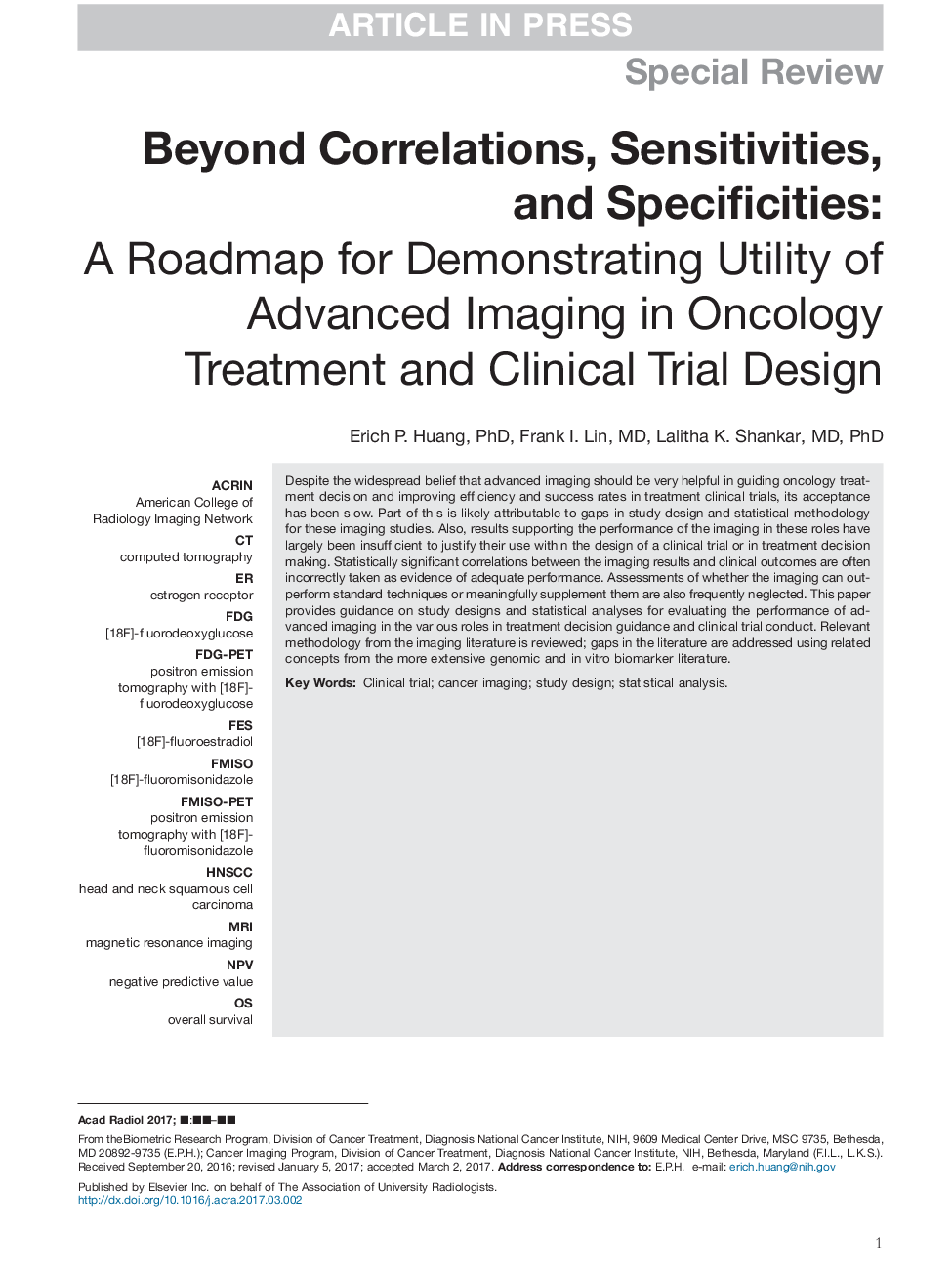| Article ID | Journal | Published Year | Pages | File Type |
|---|---|---|---|---|
| 5725731 | Academic Radiology | 2017 | 14 Pages |
Abstract
Despite the widespread belief that advanced imaging should be very helpful in guiding oncology treatment decision and improving efficiency and success rates in treatment clinical trials, its acceptance has been slow. Part of this is likely attributable to gaps in study design and statistical methodology for these imaging studies. Also, results supporting the performance of the imaging in these roles have largely been insufficient to justify their use within the design of a clinical trial or in treatment decision making. Statistically significant correlations between the imaging results and clinical outcomes are often incorrectly taken as evidence of adequate performance. Assessments of whether the imaging can outperform standard techniques or meaningfully supplement them are also frequently neglected. This paper provides guidance on study designs and statistical analyses for evaluating the performance of advanced imaging in the various roles in treatment decision guidance and clinical trial conduct. Relevant methodology from the imaging literature is reviewed; gaps in the literature are addressed using related concepts from the more extensive genomic and in vitro biomarker literature.
Keywords
FDG-PETACRINFMISOFeS[18F]-fluorodeoxyglucoseHNSCCPPVFDGPFspositive predictive valuenegative predictive valueMRIprogression-free survivaloverall survivalStatistical analysisCancer imagingMagnetic resonance imagingcomputed tomographyPositron emission tomographyRECISTStudy designSUVResponse Evaluation Criteria in Solid TumorsNPV یا negative predictive valuestandardized uptake valuePETClinical trialHead and neck squamous cell carcinomaAmerican College of Radiology Imaging NetworkEstrogen receptor
Related Topics
Health Sciences
Medicine and Dentistry
Radiology and Imaging
Authors
Erich P. PhD, Frank I. MD, Lalitha K. MD, PhD,
